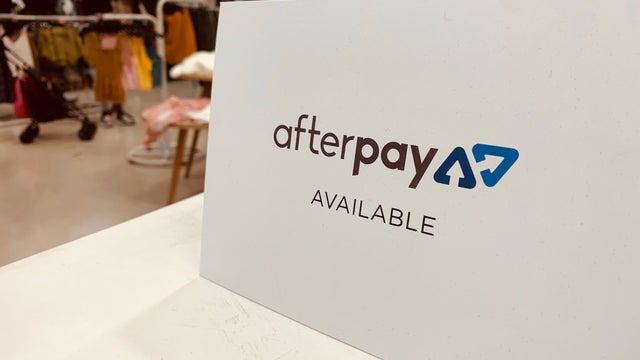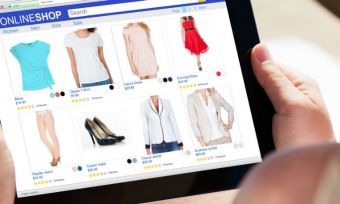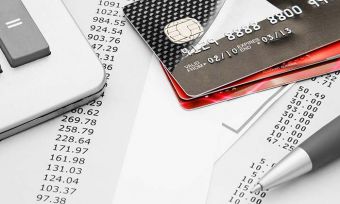Buy now pay later: what’s the difference?
Buy-now, pay-later (BNPL) services allow you to pay off an item over several weeks, interest free. This means the price you find the item for will (generally) be the overall price you pay. Payments are usually split into four instalments.
Credit cards let you spend by borrowing money from the card supplier, who will then send a bill to you at the end of each month. Credit cards have a fixed limit, which is the maximum you can borrow, and this depends on factors such as your credit score and income.
This limit can be drawn down and repaid according to the borrower’s requirements, and offers convenient interest-free periods. The interest you’ll pay on a credit card can be high, sometimes over 20%, but there are plenty of low-interest cards available, with rates as low as 6%. To check out low-interest cards click here!
But, provided you pay off your balance in full each month, credit cards can be a helpful tool to manage your cashflow and expenses.
Buy now pay later: The price you’ll pay
BNPL systems don’t charge interest. They make money from your spend by charging the merchant a fee for using their service, and late fees for anyone who doesn’t make a repayment on time. That’s $10 with Afterpay, for the first default, and $7 more every seven days from then.
When using Afterpay for items costing up to $204, late fees are capped at 25% of the price. For items above $204, you’ll pay a maximum of $68 in late fees. From an initial late fee of $10, you are then charged an additional $7 weekly until you reach the cap. The way these fees are charged has a big impact on the size of your overall penalty.
If you buy a $40 dress, and default on one payment, you’ll instantly be charged a late fee of 25% ($10).
If you buy a $100 dress and only default on one payment, you’ll still only pay $10, which is just 10% of the initial price.
While the sums involved are not huge for small purchases, they increase quickly if you continue to miss payments.
With Afterpay, in just seven weeks, you’ll incur a $50 (25%) penalty on a $200 buy if you fail to make your repayments.
For purchases between $204 and $272, your total penalty repayments could reach 33% of your original purchase price, before hitting the $68 penalty cap.
The speed at which these penalties build, plus the fact you risk earning a black mark on your credit history, show the convenience of BNPL systems come with high hidden costs should you fail to repay your debt.
Credit card a better option?
For this reason, credit cards might be a better option for some shoppers. Credit cards also have interest free days, and if you fail to pay off your full balance each month, you may not end up paying as much in interest and penalty fees as you would in fines should you miss a BNPL payment. This is especially true if you have a card with a very low interest rate, for example 6% per annum.
However, it’s worth remembering that banks also charge late payment fees should you fail to make your monthly minimum repayment, with penalties ranging from $2 to $12.
Buy now pay later: whose late payment costs hit harder?
Think of a $100 purchase on a pair of shoes.
With Afterpay
Afterpay is designed to take payments fortnightly, but it charges penalties on a weekly basis. You’ll incur a $10 fee for your first late repayment, then a $7 fee every seven days if you continue to miss your repayments. It would take only three weeks to hit the maximum $25 fee, meaning your fresh pair of kicks cost an extra 25%.
With Zip (previously PartPay)
Zip’s payments are scheduled to be taken fortnightly. You’ll pay 25% upfront, then 25% fortnightly for the next six weeks. It charges an $8 fee for missing a payment and a further $8 for every week the payment is outstanding. Payment fees are capped at $40. In five weeks, your shoes will cost you $140 – that’s 40% extra – if you fail to make your payments on time.
But remember…
There are many factors to consider when using credit to fund your lifestyle. Can you really afford your purchase, what interest rate, if any, will you be paying, and what are the hidden costs?
Of course, the best way to avoid paying fees and interest is to always pay off credit card balances and BNPL instalments when they’re due. If you’re not sure whether you’ll be able to afford the item you want by the end of the month, don’t buy it. Spend within your means.
If you are considering getting a credit card and using it wisely, Canstar is here to help. We’ve compared 72 different cards offered by 11 different institutions. Check out the findings and compare credit cards by hitting the button below.
Compare credit cards for free with Canstar
Enjoy reading this article?
You can like us on Facebook and get social, or sign up to receive more news like this straight to your inbox.
By subscribing you agree to the Canstar Privacy Policy







Share this article